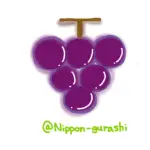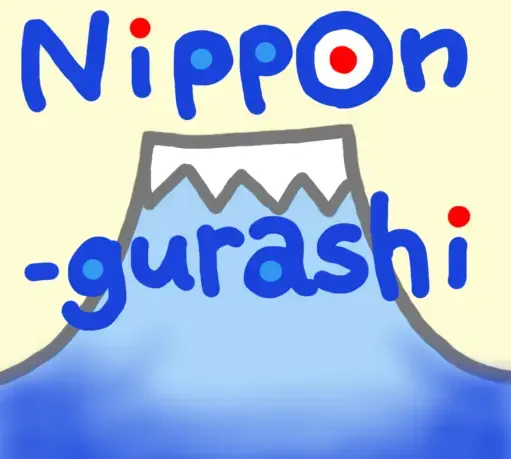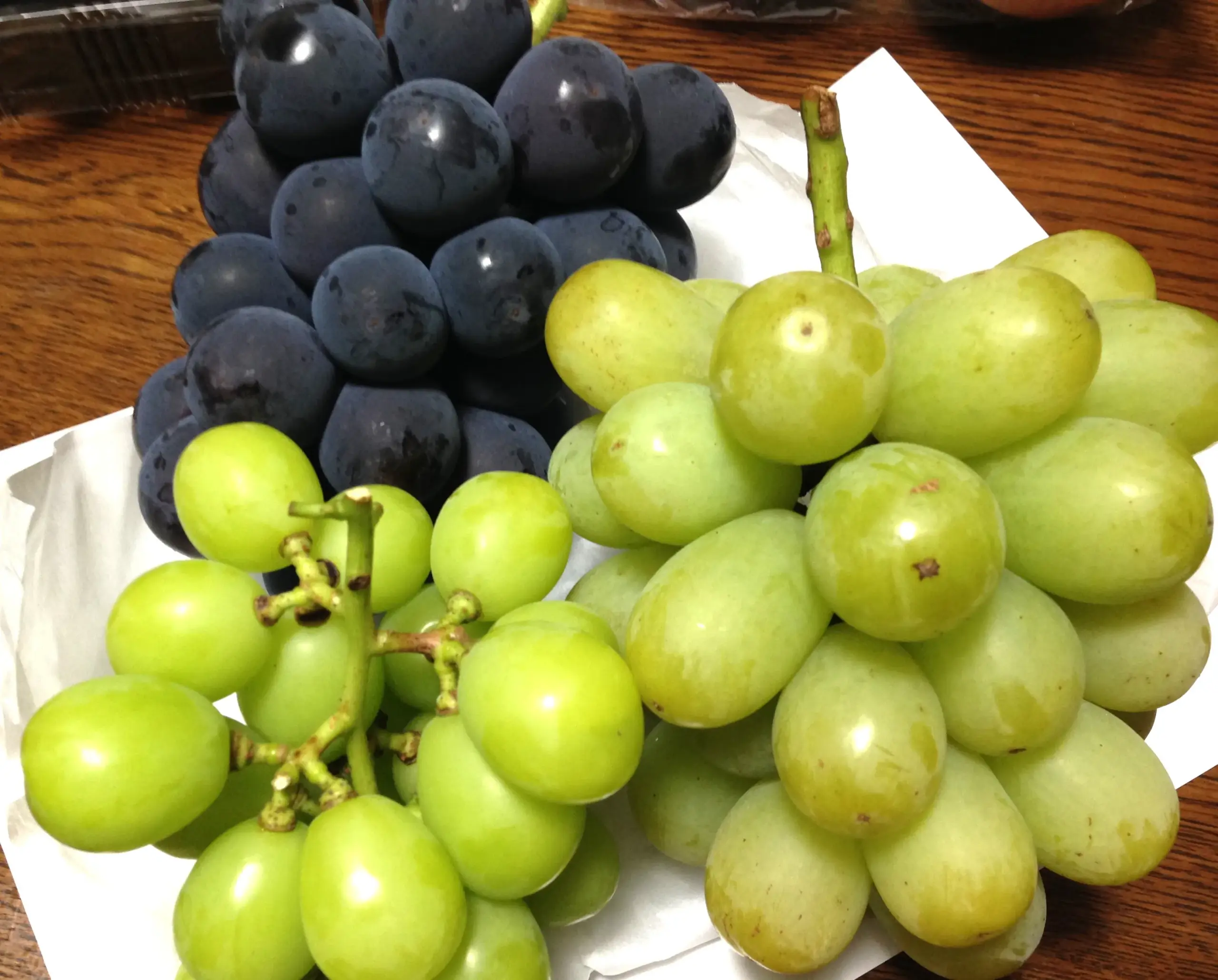(目次= Table of contents)
How Do You Eat Grapes?
Unlike fruits such as melons, oranges, or kiwifruits, that you need to cut or peel the skin to eat, it is easy to eat grapes. You just need to tear a grape off from the bunch and eat it. For people who live in Japan, this opinion is rather recent after the grapes called Shine Muscat became popular (Apparently, the boom started around 2018). Before Shine Muscat was widely spread, I’m sure many Japanese people had considered grapes as fruits that we need to peel. Let me briefly explain the history of four major grapes in Japan, Koshu, Delaware, Kyoho and Shine Muscat.
甲州(Koshu)
(1) 甲州(Koshu), the first grape that was cultivated in Japan.
The name “Koshu” is an alias for 甲斐(Kai) that is an old name of the current Yamanashi prefecture. (There is also a city called Koshu that was established in 2005 after community integration of Enzan city, Katsunuma town, and Yamato village.)
The origin of the grape had been unknown for a long time, but the genetic analysis in 2013 by National Research Institute of Brewing revealed that Koshu is a crossbreed of European grapes and wild Chinese grapes.
According to the website of Koshu city, the Koshu grape was imported to Japan about 1300 years ago via the Silk Road and China. Also, historical documents mention that Koshu was cultivated and regarded as a local fruit in the area in Edo period(1603~1868).
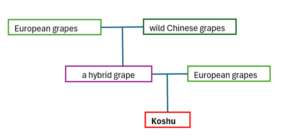
Koshu has seeds and thick skin, so Japanese people usually peel the skin and get rid of seeds before eating the sweet fruit. Koshu is used for white wine, too. Almost half the amount of harvested Koshu in Japan is for making wine, and the rest is sold as fruit.
デラウェア(Delaware)
(2)デラウェア(Delaware), the grape that could adapt to the environment in Japan.
If you are from the U.S, you may imagine the state of Delaware. However, the name of this grape came from Delaware city and the county seat of Delaware County, Ohio, United States. A berry of Delaware is small and there are seeds inside, but the fruit is very sweet.
Delaware was imported from the U.S to Japan for the first time in 1872 (Meiji era).
Although the Japanese government in the Meiji era imported many different grapes from western countries in order to promote their agricultural industry, all the European grapes failed to grow in Japan due to the difference in climate unfortunately. Unlike the grapes from Europe, Delaware from the U.S was strong against plant diseases and could adapt to the climate in Japan. After that, the cultivation of Delaware was spread nationwide.
The reason Delaware became popular in Japan was that people invented a way to produce seedless Delaware in 1959. They were shipped in 1960, and the market price was double that of Delaware with seeds. Even though the skin of Delaware is edible and not very thick, many Japanese don’t eat seedless Delaware as it is. We pinch out the fruit from the skin one by one.
巨峰(Kyoho)
(3) 巨峰(Kyoho), the grape that had been the most popular in Japan for a long time.
Kyoho was born in 1942. It is cross-pollinated of “Centennniel” from Australia and “Ishihara-wase”, which is a mutant of “Campbell early” from the U.S. The official name is 石原センテニアル(Ishihara-Centenniel), but the brand name Kyoho is commonly used in the Japanese market.
Unlike Koshu or Delaware, the size of Kyoho’s berries is large. The brand name’s 巨(kyo) literally means enormous or giant, and 峰(ho) means peak or ridge of mountains. Apparently, Mt.Fuji can be seen from Kyoho’s production area in Yamanashi prefecture and it was named due to that.
The color of Kyoho’s skin is blackish purple, and Japanese people peel the skin since it is thick and has a tannic flavor. Both seedless and seeded Kyoho are sold, but Kyoho that people can buy in Tokyo is mainly seedless. Kyoho had been the most popular grape, and its acreage was the largest among grapes in Japan until 2021. However, Shine Muscat broke the record held by Kyoho in 2022.
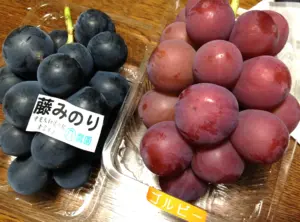
シャインマスカット (Shine Muscat)
(4)シャインマスカット (Shine Muscat), the most popular grape in Japan nowadays.
Shine Muscat was created in Japan by National Institute of Fruit Tree and Tea Science (NIFTS), which is one of the segments of the research facility called National Agriculture and Food Research Organization (NARO) in 1988. Shine Muscat was officially registered as a grape variety in Japan by the Ministry of Agriculture, Forestry and Fisheries in 2006.
Shine Muscat has large berries with a yellowish green color. They are seedless and the skin is very thin and easy to eat. Although the fruit is as sweet as Kyoho, the acidity of Shine Muscat is lower than Kyoho’s. The biggest feature of Shine Muscat is the crisp texture when you eat the fruit with its skin.
Before I tried Shine Muscat for the first time, I doubted if it is truly delicious with the skin. I personally don’t like grapes’ skin since it is usually astringent and is left in my mouth after chewing the fruit, so I always get rid of the skin of grapes. My expectation was not very high, but I noticed I was completely wrong. I enjoyed the texture of the skin and fruit, and the flavor of the skin didn’t bother the sweet fruit. I came to like Shine Muscat immediately.
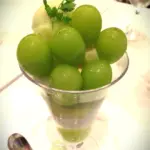
Grape and muscat flavors are popular for candies as well! Japanese fruit-flavored gummy candies including grape and muscat flavors. (Amazon Link)
Why Is Shine Muscat Different from Other Japanese Grapes?
Unlike other grapes, Shine Muscat is considered by Japanese people to be delicious eaten as they are. The good reputation of the grapes also brought a change for the Japanese confectionery industry. They don’t need the process of peeling or getting rid of seeds, so the grapes started to be used for a variety of desserts.
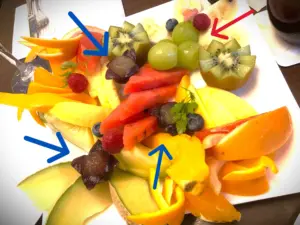
As you can see in this photo, the purple grapes on the plate are half peeled but the Shine Muscat grapes are provided as they are. How did I eat these grapes? Of course, I peeled all the skin off of the purple grapes before I ate them, and I ate the Shine Muscat grapes without peeling!
The best season of grapes in Japan is generally from July to November depending on the type of grape and producing area. Please try some Japanese grapes if you come to Japan during this period. Don’t worry about how you eat grapes in Japan! It’s your preference whether to peel or not.
Popular Japanese muscat jelly with unique texture. (Amazon Link)
